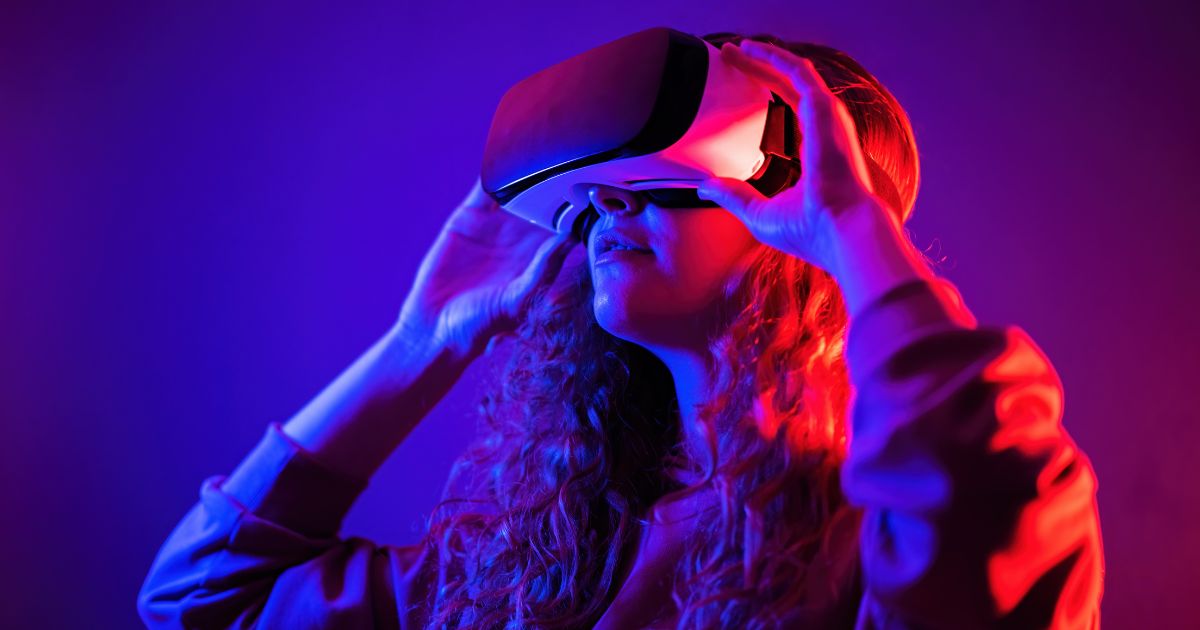In the rapidly evolving landscape of the digital age, consumer behavior is undergoing a profound transformation. Traditional methods of studying consumer habits no longer suffice in capturing the complexities of the online world. Digital ethnography emerges as a powerful tool to unravel the intricacies of consumer behavior in this dynamic environment. This article explores the significance of digital ethnography and its role in deciphering the patterns, preferences, and interactions that shape consumers’ online experiences.
The Evolution of Consumer Behavior
To comprehend the impact of digital ethnography, it’s essential to trace the evolution of consumer behavior. Over the past decade, the internet has become an integral part of daily life for billions of people worldwide. According to the latest data from the International Telecommunication Union (ITU), approximately 5.4 billion individuals, or 67% of the global population, use the internet regularly. This widespread connectivity has given rise to a digital society where individuals engage in various online activities, from socializing to shopping.
With the advent of smartphones, the internet is no longer confined to desktops. Mobile devices have become ubiquitous, with Statista reporting the global number of smartphone users in was forecast to continuously increase between 2024 and 2029 by in total 1.5 billion users (+30.6 percent). This shift to mobile usage has reshaped consumer behavior, with people accessing information, products, and services anytime, anywhere. Understanding this evolution is crucial for businesses aiming to adapt their strategies to meet the changing needs and expectations of consumers.
The Digital Ethnography Advantage
Digital ethnography, as a research methodology, provides a comprehensive understanding of consumer behavior in the digital age. Unlike traditional market research methods that rely on surveys and interviews, digital ethnography involves observing and analyzing consumer interactions in their natural online environments. This approach allows researchers to gain insights into the nuances of digital consumption, uncovering the motivations, values, and cultural factors that influence decision-making.
One of the key advantages of digital ethnography is its ability to capture real-time data. Social media platforms, forums, and online communities serve as rich sources of information where consumers express their opinions, share experiences, and engage with brands. Analyzing these digital spaces enables researchers to identify trends, track sentiment, and monitor discussions that shape consumer perceptions.
Furthermore, digital ethnography facilitates the exploration of user-generated content. The rise of content creation on platforms like YouTube, Instagram, and TikTok provides researchers with a wealth of material to analyze. By studying user-generated content, businesses can gain valuable insights into how consumers interact with products and services, allowing for a more nuanced understanding of their preferences and behaviors.
Case Study: Unveiling Consumer Insights through Social Media

To illustrate the power of digital ethnography, let’s examine a case study that delves into consumer insights derived from social media. In 2022, a global beverage company conducted a digital ethnography study to understand the preferences of its target audience. By monitoring conversations on platforms like Twitter, Instagram, and Facebook, researchers were able to identify emerging trends and sentiments related to their brand.
The study revealed that consumers were increasingly valuing sustainability and environmental responsibility. This insight prompted the beverage company to adjust its marketing strategies, emphasizing eco-friendly packaging and sustainable sourcing practices. As a result, the brand experienced a significant boost in consumer trust and loyalty, showcasing the tangible impact of digital ethnography on business decision-making.
Cultural Sensitivity in Digital Ethnography
In the digital age, consumer behavior is deeply intertwined with cultural influences. Digital ethnography recognizes the importance of cultural sensitivity in understanding the diverse ways in which individuals engage with online content. Whether it’s language, symbols, or cultural references, researchers must navigate the intricate tapestry of digital culture to derive meaningful insights.
A study conducted by Nielsen found that 54% of consumers prefer products offered in their native language. This statistic underscores the significance of language and cultural nuances in shaping consumer preferences. Digital ethnographers, therefore, must not only analyze textual data but also consider the cultural context in which online interactions occur.
By employing cultural sensitivity in digital ethnography, businesses can tailor their digital strategies to resonate with specific cultural groups. For example, a multinational e-commerce platform might adjust its user interface and marketing messages to align with the cultural preferences of diverse target audiences. This approach fosters a deeper connection between brands and consumers, contributing to the establishment of trust and brand loyalty.
Challenges in Digital Ethnography
While digital ethnography offers invaluable insights into consumer behavior, it is not without its challenges. Privacy concerns, ethical considerations, and the sheer volume of online data pose significant obstacles for researchers. Striking a balance between gathering meaningful insights and respecting individuals’ privacy is a delicate task.
In recent years, data privacy has become a prominent issue, with increasing awareness among consumers about the protection of their personal information. The General Data Protection Regulation (GDPR) in the European Union and similar legislation worldwide underscore the importance of ethical data collection practices. Researchers employing digital ethnography must navigate these regulations carefully to ensure compliance and maintain the trust of their subjects.
The sheer volume of data generated online is another challenge for digital ethnographers. Sorting through massive datasets to extract relevant information requires sophisticated analytical tools and methodologies. Artificial intelligence and machine learning algorithms play a crucial role in processing and interpreting large-scale digital data, enabling researchers to identify patterns and trends efficiently.
The Integration of Artificial Intelligence in Digital Ethnography
Artificial intelligence (AI) is revolutionizing digital ethnography by enhancing the efficiency and accuracy of data analysis. As online interactions continue to grow in complexity and volume, AI-powered tools become indispensable for researchers seeking to uncover meaningful insights.
Natural Language Processing (NLP) is a prominent application of AI in digital ethnography. This technology enables machines to understand and interpret human language, allowing researchers to analyze vast amounts of textual data efficiently. Sentiment analysis, a subset of NLP, can be particularly useful in gauging consumer reactions and emotions expressed in online conversations.
Machine learning algorithms also contribute to the predictive capabilities of digital ethnography. By training models on historical data, researchers can anticipate future trends and consumer behaviors. This foresight empowers businesses to proactively adapt their strategies, staying ahead of market shifts and consumer preferences.
The Role of Virtual Ethnography in Remote Environments
The COVID-19 pandemic has accelerated the shift toward remote work and digital interactions. In this context, virtual ethnography has gained prominence as a method for studying consumer behavior in online environments. Virtual ethnography involves observing and analyzing digital interactions without physical presence, making it well-suited for the current remote-centric landscape.
Online communities, discussion forums, and virtual events serve as arenas for virtual ethnography. Researchers can engage with participants in these digital spaces, observing their behaviors, collecting data, and gaining insights into their preferences. The convenience and accessibility of virtual ethnography make it a valuable tool for studying diverse online communities.
A study conducted by Pew Research Center found that 53% of U.S. adults participated in online communities or groups, emphasizing the prevalence of digital interactions. Virtual ethnography allows researchers to tap into these online spaces, providing a nuanced understanding of consumer behavior in the absence of physical proximity.
Ethical Considerations in Virtual Ethnography
As researchers conduct virtual ethnography, ethical considerations become paramount. The online environment presents unique challenges, including issues of consent, anonymity, and the potential for misinterpretation. Establishing clear guidelines and ethical standards is essential to ensure the responsible and respectful conduct of virtual ethnographic research.
In the absence of face-to-face interactions, obtaining informed consent becomes a crucial aspect of virtual ethnography. Researchers must clearly communicate the purpose of their study, the data they intend to collect, and how it will be used. Additionally, ensuring the anonymity of participants is essential to protect their privacy in the digital realm.
Misinterpretation of online interactions is a risk in virtual ethnography. Context can be lost, and statements may be taken out of context, leading to inaccurate conclusions. Researchers must approach online data with caution, considering the limitations of virtual interactions and the potential for misunderstanding cultural nuances.
The Future of Digital Ethnography

As technology continues to advance and consumer behavior becomes increasingly complex, the future of digital ethnography holds exciting possibilities. The integration of immersive technologies such as virtual reality (VR) and augmented reality (AR) presents new avenues for studying consumer behavior in more interactive and dynamic ways.
VR enables researchers to create virtual environments that simulate real-world scenarios, allowing participants to engage in activities as they would in physical settings. This level of immersion enhances the authenticity of digital ethnographic studies, providing deeper insights into the factors influencing consumer decision-making.
Moreover, AR overlays digital information onto the real world, offering a blended experience that merges physical and digital interactions. This technology has the potential to transform how researchers observe and analyze consumer behavior in diverse settings, from retail environments to social interactions.
Conclusion
Digital ethnography stands at the forefront of understanding consumer behavior in the digital age. By delving into the online spaces where individuals interact, share, and express themselves, researchers can uncover valuable insights that shape business strategies and decision-making. The evolution of consumer behavior, cultural influences, and the integration of artificial intelligence all contribute to the dynamic landscape of digital ethnography.
While challenges such as privacy concerns and ethical considerations persist, the responsible application of digital ethnography can yield significant benefits for businesses seeking to navigate the complexities of the digital realm. As technology continues to advance, the future holds even greater potential for immersive and interactive methods that provide a deeper understanding of the diverse ways in which consumers engage with the digital world.
In conclusion, digital ethnography is not just a research methodology; it is a lens through which we can gain a profound understanding of the digital tapestry woven by consumer interactions in the 21st century. As businesses strive to stay ahead in an ever-evolving digital landscape, embracing digital ethnography becomes imperative for decoding the intricacies of consumer behavior and building meaningful connections in the digital age.
FAQs
The issue of consent in digital ethnography is complex, especially when researchers are navigating the vast landscape of public online interactions. Researchers often rely on the ethical guidelines provided by their institutions and the broader academic community, which dictate that any publicly available data can be used for research purposes as long as individual privacy is not compromised. This means anonymizing data and ensuring that individual identifiers are removed before analysis and publication. In situations where online behavior is studied in more controlled environments, such as specific online communities or forums, researchers may obtain consent through direct communication, explaining the scope of their study and how the data will be used. This process is crucial for maintaining the trust and integrity of the research relationship.
Researchers employ a variety of qualitative and quantitative methods to ensure the robustness of their findings. This includes triangulation, where multiple sources of data or methods are used to cross-verify the results, enhancing the validity of the research. Advanced analytics and AI tools are employed not just for data collection but also for analysis, with algorithms designed to detect patterns, sentiment, and themes within large datasets. However, the human element remains crucial; researchers must interpret the data within the correct cultural and contextual frameworks. This often involves iterative rounds of analysis, where findings are continuously refined to reflect the nuances of digital consumer behavior accurately.
Addressing the digital divide in digital ethnography is an ongoing challenge that researchers are acutely aware of. Ensuring inclusivity in studies involves deliberately designing research that accounts for and actively seeks out the perspectives of those who may be underrepresented in the digital space. This can include using mixed methods that combine digital ethnography with traditional ethnographic approaches, such as face-to-face interviews and observations in communities with limited digital access. Researchers also strive to study a range of digital platforms, not just the most popular or accessible ones, to capture a broader spectrum of digital engagements. In doing so, they aim to mitigate the bias that the digital divide might introduce into their findings, striving for a holistic understanding of consumer behavior that encompasses both digital natives and those on the periphery of the digital world.
Have a project that you’re looking to field?
Logit can help. Just fill out the form below and a Logit Group team member will be in contact with you shortly. Get a quote today.





